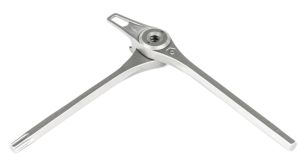Vilice
FREESTYLE SCOOTER FORKS
If you want to learn something about forks for freestyle scooters, you must first of all be willing to do a now almost forgotten activity - reading.
Forks are a basic component of freestyle scooters. It is important to note that while freestyle scooter forks are designed for freestyle riding and are therefore durable, they are NOT indestructible. Like all human activities, riding a freestyle scooter requires the heavy involvement of your brain. You could also benefit from another one or two factors: Alteration of the laws of physics or the chemical table of elements. :-)
Forks are made of CrMo (steel) or aluminum. The vast majority of threadless forks (see below) available on the market are made of aluminum. Aluminum forks are lighter than steel forks and strangely enough, are stronger too.
FORKS CAN BE CLASSIFIED ACCORDING TO VARIOUS CRITERIA
a) Material
Aluminum vs. CrMo (steel)
b) Threaded vs. threadless forks
Threaded forks (the fork tube is threaded) are only used on cheap entry-level scooters. They are practically non-existent on the scooter-parts market. Threaded forks are always steel and two-piece. Because of the threads, they have a weakened tube wall and are therefore not very durable. They are also not suitable for the use of pegs.
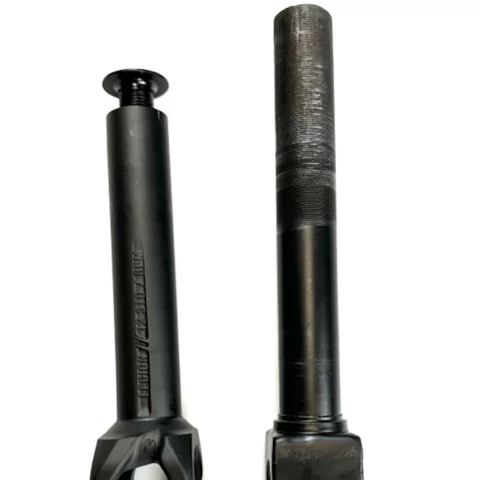
c) One-piece vs. two-piece forks
The vast majority of forks available on the market are one-piece forks. They are made from a single piece of aluminium using different technological processes. Forks made this way have no welds and are therefore very durable.
To summarize points (a) to (c), the vast majority of forks are made from one-piece of aluminium and are threadless.
d) Offset
Offset indicates whether the wheel axle lies on or off the fork tube axis.
The forks are thus divided into Zero Offset forks (wheel axle lies on the fork tube axis) and Offset forks (wheel axle lies outside the fork tube axis). Most forks have a very similar offset.
There are very few Zero Offset forks on the market.
Offset forks make for a smoother control of the scooter
Zero offset forks are more playful; offset forks are more comfortable
e) Compatibility with different wheel diameters
There are different wheel diameters on the market at the moment. 100mm, 110mm, 115mm, 120mm and 125mm.
All threadless & one piece forks available today are compatible with 100mm and 110mm diameter wheels. It's standard.
A fairly high percentage of forks will also accommodate 120mm or 125mm diameter wheels.
If you want to use 120mm or 125mm wheels on your scooter, you need to choose the right fork model, as well as the right deck!
Threaded, steel & two-piece forks used on basic scooters are usually only compatible with 100mm diameter wheels.
f) Compatibility with compression systems
For forks that use the HIC/SCS compression system, the length of the fork tube is important.
If SCS is used, the fork tube must not protrude more than 3-5 cm from the headset, see the following video:
Likewise, when using the HIC system, the fork tube must not protrude more than the height of the HIC shim, which is usually 4 - 5 cm. HIC forks have therefore longer tubes than SCS forks.
The tube of the ICS fork should protrude no less than 4.5 cm from the headset, for the proper function of the clamp and to cover the handlebars slit.
Conventional ICS / HIC / SCS forks have an outer tube diameter of 28.7 mm.
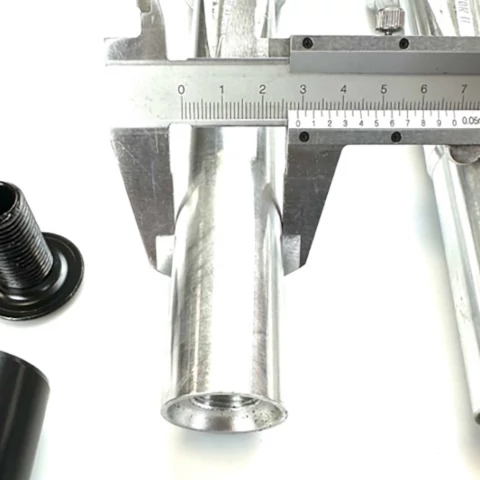
IHC forks are different. These forks have an outer tube diameter of approximately 25mm (diameters vary by manufacturer, but are approximately 25mm). Using the IHC shim, which has the same function as the HIC shim, results in a standard tube diameter of 28.7 mm.
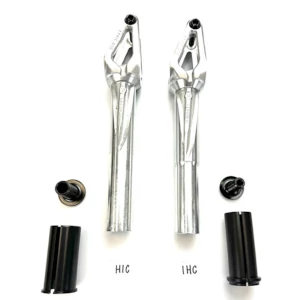
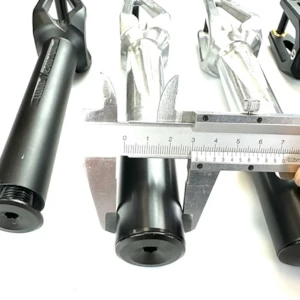
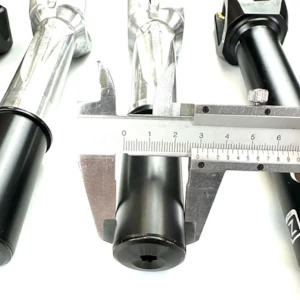
Most HIC and SCS forks have a pre-grooved thread inside the tube. If you are unlucky enough to own a fork without such a thread, it is not the end of the World. In that case, starnuts are used: or .
Steel forks use a 1 1/8" starnut, aluminum forks use a 1" starnut.
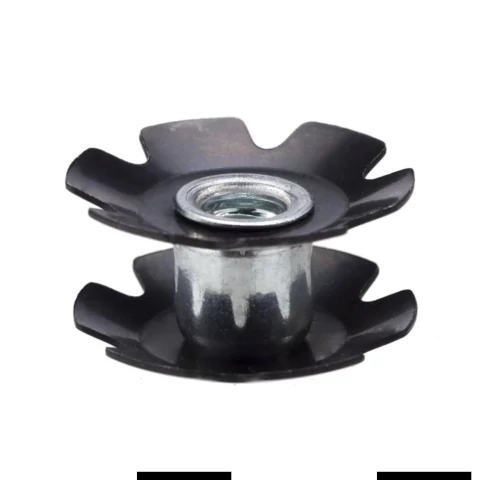
HOW TO EXTEND FORK LIFESPAN
1) Treat your scooter well. Do not throw it around.
2) Perform tricks in a clean manner. The more you suppress the landing with your bent knees, the more you save not just the fork but also your joints.
3) Use your compression system correctly see
4) Using pegs protects the fork from excessive wear caused by grinds.
5) Do not lend your scooter to friends. They may weigh 30 kg more and have a completely different riding style.
HOW TO CHOOSE THE RIGHT FORK
1) Aluminium or steel
Unless you are a masochist, get an aluminium fork. After all, the choice of threadless steel forks is very limited.
2) SCS, HIC, IHC or ICS fork?
When choosing a new fork, you need to take into account your existing compression system. In general, HIC forks and SCS forks can be interchanged. ICS forks are usually (with minor modifications) compatible with SCS/HIC compression systems. IHC forks cannot be used with any other compression system.
3) Zero offset or offset?
Offset forks make for a smoother control of the scooter
Zero offset forks are more playful, offset forks are more comfortable.
How does the crowd decide? At least 98% of forks sold are offset forks.
4) Pay attention to the height of the deck headtube!
More information in the following video tutorial:


